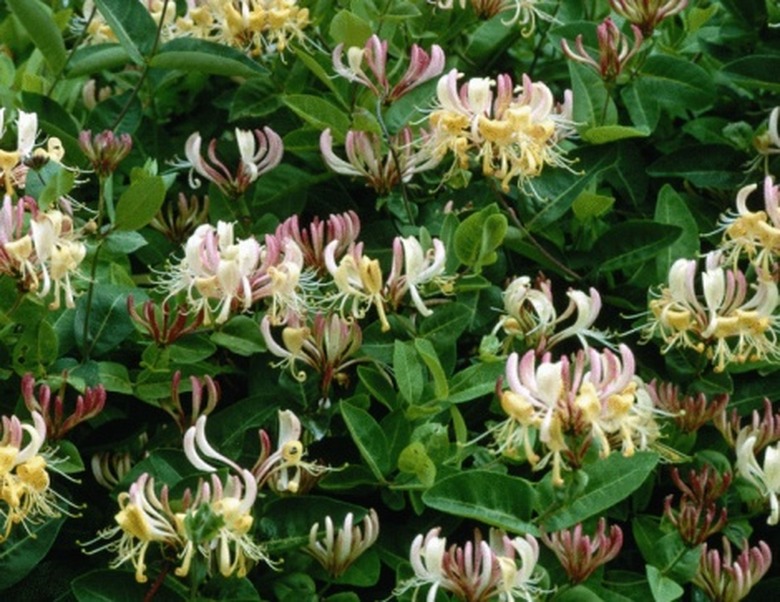What Causes Honeysuckle Vines To Wilt?
Lonicera is a botanical genus that contains approximately 180 species of fast-growing, deciduous twining vines that are more commonly known as honeysuckle. These attractive vines are usually cultivated for the fragrant, bell-shaped blossoms that blanket them in the springtime. Honeysuckle vines grow successfully in United States Department of Agriculture plant hardiness zones 4 through 10a, according to the University of Florida Cooperative Extension Service. Though generally simple to cultivate, there are several reasons why the honeysuckle vines in your garden or home landscape may wilt.
Transplanting Shock
Honeysuckle vines can be obtained from your local garden center or nursery and transplanted directly into your garden or home landscape. However, the process of moving the vines from one place to the other may stress them enough to cause wilting. Fortunately, there are a few things that you can do to reduce the stress that the vines experience during the transplanting process. Wait for a cloudy day and plant your vines early in the morning; too much direct sun on the day of transplant increases the stress to your plant. Provide the honeysuckle with at least 1 inch of water after planting to prevent them from wilting and encourage them to establish strong roots in their new location.
Not Enough Water
While honeysuckle tolerates dry soil for short periods of time, allowing the soil to dry out too much will cause its foliage and flowers to wilt. For the healthiest growth and the most prolific blooming, water your honeysuckle regularly during the spring and summer; 1 inch of supplemental irrigation per week should be enough to keep the soil moist but well-drained. To avoid over-watering, which can also lead to wilting, allow the surface of the soil to dry to the touch between each irrigation.
Verticillium Wilt
Caused by the soil borne fungi, Verticillium dahliae, Verticillium wilt is a damaging fungal disease that affects woody ornamental plants such as honeysuckle vines. Early symptoms of Verticillium wilt include wilting and yellowing leaves. As the disease progresses, your honeysuckle vines may suffer defoliation, branch dieback and death. Remove and destroy affected vine portions with sharpened and sterilized pruning shears. Water the honeysuckle regularly to help prevent future Verticillium wilt outbreaks; stressed vines are more susceptible to the disease.
Honeysuckle Leaf Blight
Another botanical disease that can lead to the wilting of honeysuckle vines is honeysuckle leaf blight. Spread by the fungus Insolibasidium deformans, honeysuckle leaf blight causes newly formed leaves to wilt and curl. Severely infected leaves may turn brown and drop from the plant prematurely. To control honeysuckle leaf blight, prune out infected foliage with sharpened and sterilized pruning shears. Remove and destroy the infected foliage instead of leaving it on the ground near the plant.
References
- "The Essential Garden"; Liz Dobbs; 2002
